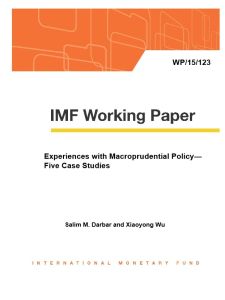Join getAbstract to access the summary!

Join getAbstract to access the summary!
Salim M. Darbar and Xiaoyong Wu
Experiences with Macroprudential Policy
Five Case Studies
IMF, 2015
What's inside?
The implementation and effects of the macroprudential regulation of financial systems varies across different economies.
Recommendation
The severity of the Great Recession awakened economic leaders to the need for financial stability policies that address risks to the global economy, specifically those arising from fragile banking systems and uncontrolled leverage in the housing sector. This recap from the International Monetary Fund of how five diverse economies have addressed their macroprudential regulatory needs offers evidence of some early successes. getAbstract recommends this broad and cogent report to central bankers, economists and policy makers.
Summary
About the Authors
Salim M. Darbar and Xiaoyong Wu are economists at the International Monetary Fund.

















Comment on this summary